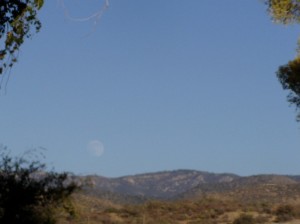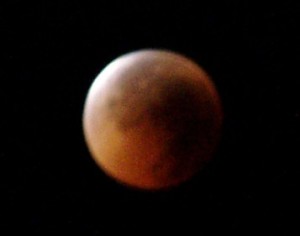Lunar Eclipse Tetrad Begins
 For those of us in the United States, an extraordinary thing is happening in the nighttime sky. I love to watch the waxing – which means the increasing fullness – of the moon. We are now approaching a full moon.
For those of us in the United States, an extraordinary thing is happening in the nighttime sky. I love to watch the waxing – which means the increasing fullness – of the moon. We are now approaching a full moon.
When the full Moon passes through the shadow of Earth, an eclipse is produced. A series of four – a tetrad – of total lunar eclipses is about to begin.
“The most unique thing about the 2014-2015 tetrad is that all of them are visible for all or parts of the USA,” says longtime NASA eclipse expert Fred Espenak.
Watch for this all to start on April 15th early in the morning with a midnight total lunar eclipse. This begins the lunar eclipse tetrad—a series of 4 consecutive total eclipses occurring at approximately six month intervals. The dates of the tetrad are:
- April 15, 2014
- October 8, 2014
- April 4, 2015
- September 28, 2015
How unusual is this?
The average year has two lunar eclipses. This series is unusual because they are total eclipses.
There are three types of eclipses:
 Penumbral eclipse: The Moon passes through the pale outskirts of Earth’s shadow. It’s so subtle, sky watchers often don’t notice an eclipse is happening.
Penumbral eclipse: The Moon passes through the pale outskirts of Earth’s shadow. It’s so subtle, sky watchers often don’t notice an eclipse is happening.
Partial eclipse: The Moon dips deeper into Earth’s shadow, but is not totally immersed, so only a fraction of Moon is darkened. This is more dramatic than the penumbral eclipse.
Total eclipse: The entire Moon is engulfed in Earth’s shadow. This is the most dramatic of all. The face of the Moon turns sunset-red for up to an hour or more as the eclipse slowly unfolds.
Usually, lunar eclipses come in no particular order. A partial can be followed by a total, followed by a penumbral, and so on. Anything goes. Occasionally, though, the sequence is more orderly. When four consecutive lunar eclipses are all total, the series is called a tetrad.
“During the 21st century, there are 9 sets of tetrads, so I would describe tetrads as a frequent occurrence in the current pattern of lunar eclipses,” says Espenak. “But this has not always been the case. During the three hundred year interval from 1600 to 1900, for instance, there were no tetrads at all.”
“Science at NASA” tells us a lot more
Technically, the April 15th eclipse begins at 2 AM Eastern time when the edge of the Moon first enters the core of Earth’s shadow.
Totality occurs about 3 o’clock in the morning on the east coast, midnight on the west coast. It lasts about 78 minutes. This lunar eclipse will be easy to see across the whole continent of North America. Stay up late on Monday, April 14 and you will be rewarded.
Where will you be when the moon eclipses this month? Please leave a comment below.
WANT TO USE THIS ARTICLE IN YOUR NEWSLETTER OR WEB SITE?
You can, as long as you include this complete blurb with it: “Naturopathic Physician Dr. Cheryl Kasdorf is a doctor who listens and has answers with a natural approach that works. She is known as the go-to person to get back your get-up-and-go when it is gone, gone, gone. Get your FREE gift “Dr. Kasdorf’s Health Secrets for Feeling & Looking Great” at drcherylkasdorf.com



